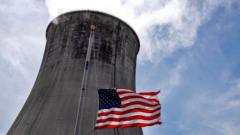Google has acknowledged a significant failure in its earthquake early warning system during the catastrophic Turkey earthquakes of 2023, which resulted in over 55,000 fatalities. Despite being operational, the system failed to send out timely and critical alerts to approximately 10 million people located within 98 miles of the earthquake's epicenter. It was found that only 469 high-priority "Take Action" warnings were issued for the initial 7.8 magnitude quake.
Affected individuals were instead alerted with a lower-tier warning meant for minor tremors, which does not interrupt users with prominent notifications. While Google previously characterized its early warning system's performance as satisfactory, they are now facing scrutiny about the effectiveness of their emergency alert procedures. The Android Earthquake Alerts (AEA) system operates primarily on Android devices, which comprise over 70% of smartphones in Turkey.
On February 6, 2023, when two earthquakes hit South East Turkey early in the morning, many residents were asleep. Experts believe that a functioning high-level alert could have given individuals crucial time to find safety. Google stated that they are continuously improving their system based on lessons learned from each seismic event.
The AEA system relies on the collective data of hundreds of thousands of Android devices to detect seismic activity. In the case of the Turkey earthquakes, the algorithm grossly underestimated the seismic intensity of the first quake, registering a 4.5 to 4.9 when it was actually 7.8. The subsequent tremor saw some improvement, with 8,158 "Take Action" alerts sent out.
Researchers from Google have since revised the algorithm to enhance the system's performance. Post-simulation of the initial earthquake, the revised system demonstrated its capacity to issue 10 million urgent alerts and additional notifications to millions beyond the immediate danger zone. Experts, including Elizabeth Reddy of the Colorado School of Mines, have expressed frustration at the delays in addressing these failures, especially given the human costs.
While Google asserts that their early warning system is a supplemental tool and should not replace national warning systems, concerns arise about reliance on technology that lacks comprehensive testing. Harold Tobin, Director of the Pacific Northwest Seismic Network, emphasizes the necessity for transparency regarding the system's efficacy, stating that over-reliance on such technology could lead to complacency among officials.
Though AEA has since been implemented in 98 countries, the effectiveness remains to be evaluated post-events in other regions, including Myanmar, for which Google has not yet provided performance feedback. The tragic reality of the Turkish earthquakes serves as a stark reminder of the critical role that advance warnings can play in saving lives.

















